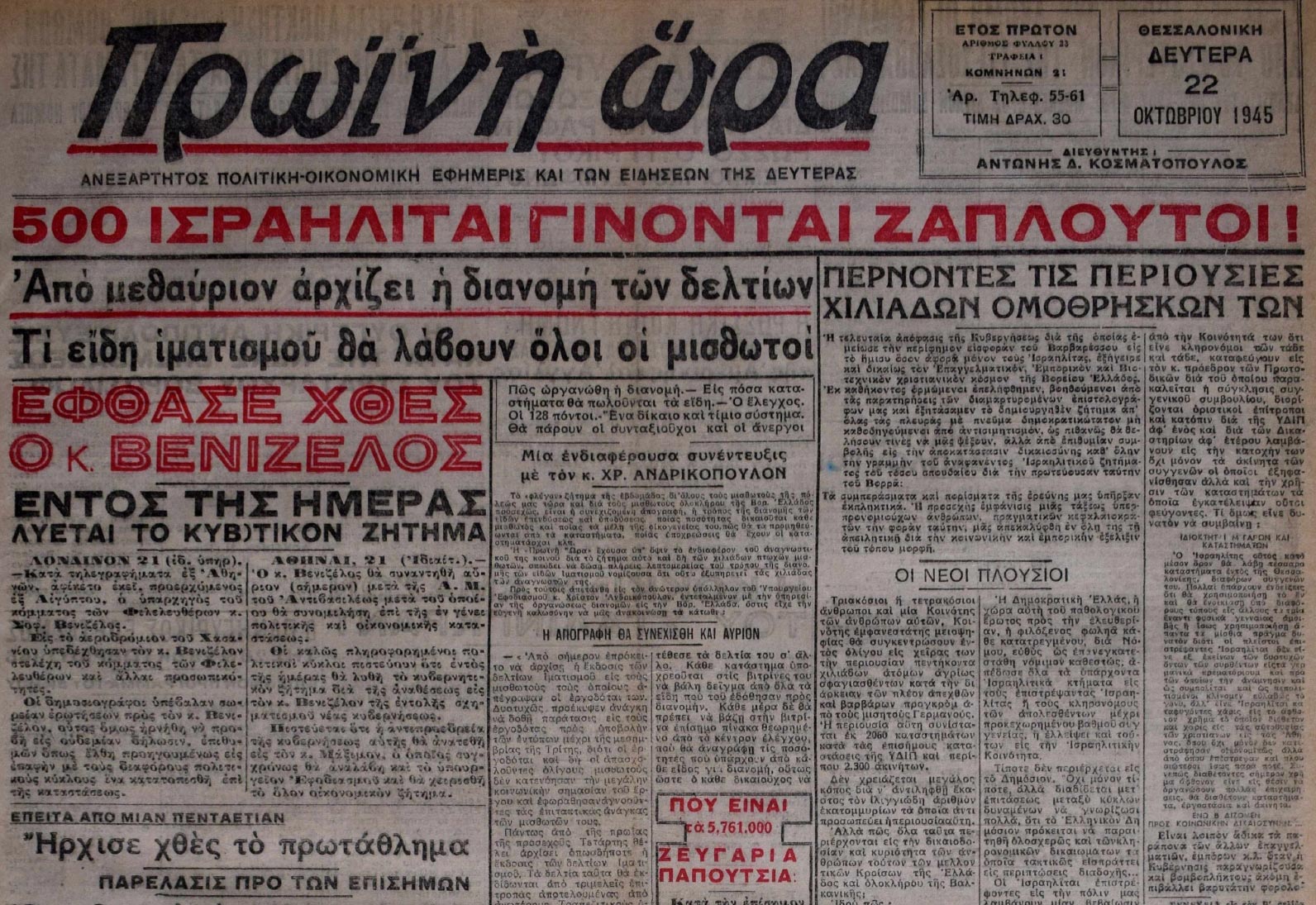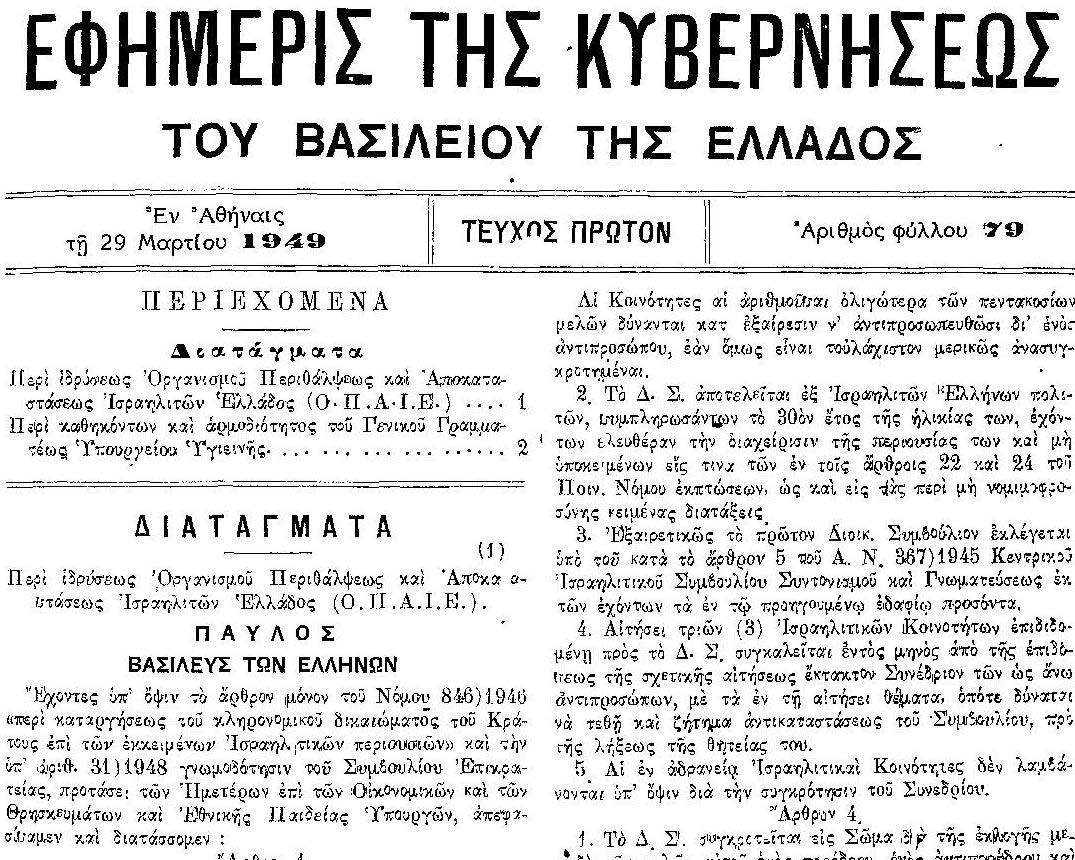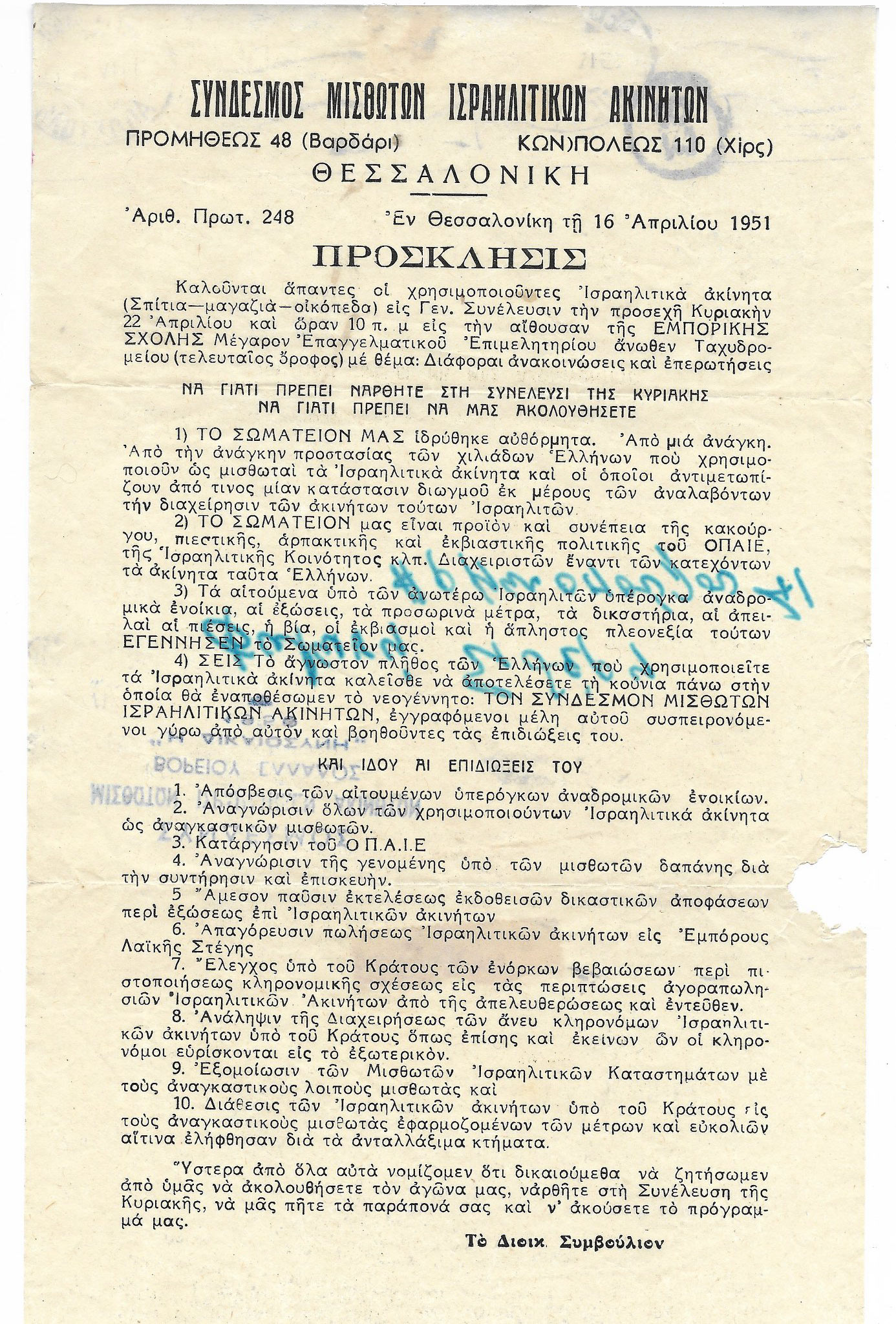At the beginning of 1944, before liberation, the Greek state founded KYDIP, the Central Service for the Disposal of Jewish Properties to administer Jewish properties in the other areas of Greece, except for Macedonia. During liberation KYDIP was renamed Central Service for the Clearing and Reimbursement of Jewish Properties and continued administering the Jewish properties and appointing custodians even in 1945 after the end of the war.
At the same time the Greek state with a series of laws endeavored to return the Jewish properties to their rightful owners and their heirs. The mandatory law 846 of 1946 “On the abolition of the inheritance right of the State on the Jewish Properties” was a significant step forward that was rounded off with the royal decree of 29 March 1949 and the founding of OPAIE (Organization for the Relief and Rehabilitation of the Greek Israelites, also known as Heirless Property and Jewish Rehabilitation Fund).
Despite the new legal provisions, the realization of the magnitude of the crime against the Jews and the plunder of their properties, the return process proved to be extremely difficult. The long-suffering Jews and the Community that struggled to find the needing resources to care for them had to deal with unfavorable bureaucracy, court rulings and legal obstacles. Meanwhile the press posts of the time reveal that antisemitism was still vivid.

The founding of OPAIE
OPAIE was found in March 1949 with the aim to locate, claim back and return Jewish properties to their rightful owners, their heirs or the Jewish Community. According to the provisions OPAIE inherited all the abandoned properties originally belonging to Greek Jews who perished due to racial persecution during 1943-1944 and did not leave heirs or had not any fourth-degree relatives. Five years after the end of the war in Greece, OPAIE was constituted as a new service capable of dealing with Jewish properties following the rule of law.

OPAIE inherited the properties that were administered by YDIP and then KYDIP, meaning immovable properties all over Greece and a few movables (valuables). Besides these, OPAIE located properties that were not administered by KYDIP. This highlights the complexity of the crime committed; it was a conscious effort to steal Jewish real estate in such a way that it could never be claimed back.
OPAIE’s office in Thessaloniki dealt with finding out the fate of thousands of properties administered previously by YDIP while its staff located 189 properties more that needed to be investigated. The office operated in the city until 1979. Hundreds of real estate cases were examined which were either returned to the rightful owners and their heirs or were claimed and returned to OPAIE. Litigation was a big part of the organization’s activity as several return claims were made either by or against OPAIE. It should be noted that there were cases that took decades until the return process was completed. Our scientific research project has initially reached the conclusion that OPAIE provided the legal framework for most of the claim and return cases of the Jewish real estate. Further research is necessary to provide more details and clarify certain cases, especially in the western part of Thessaloniki where many plots were claimed to be at the property of the Greek State (Service of Exchangeable Property).
The reactions
After the withdrawal of German forces from Greece, the issue of Jewish property was raised among others. Those who had received Jewish real estate, houses and shops, showed soon their reluctancy to return it. The strongest reactions came from people associated with the collaborationist regime or whose financial stake was high. The creeping antisemitism was unveiled in several cases although the horrible crime of the Jewish genocide was already revealed. For instance, hostile press reports appeared when the Jewish Community demanded the return of a chandelier that had been found in the church of Ascension originally belonging to a looted Synagogue.

Those who still possessed Jewish properties in 1949 opposed actively the new legal framework that was introduced with OPAIE. The custodians had been forming associations since the time of Occupation obstructing the restitution process and demanding even not to pay rent. In numerous cases the custodians owed rents to KYDIP outstanding for years. Subletting or attempting to sell illegally Jewish real estate was common. On Miaoulis Street there was a case where the custodian rented the apartment given to her by YDIP appearing falsely as owning the apartment for a period of ten years. In another case the custodian transferred the property to his children. The custodians, positioned as such mostly by the Germans, tried to cancel the efforts to return the Jewish real estate, especially stores, in every possible way. The custodians were intractable demanding through their announcements the abolition of OPAIE, the non-payment of the rents due and the concession of the properties to them. At all times a clear division was made, such as between Greek and Jews, that manifested antisemitism based on financial grounds.


